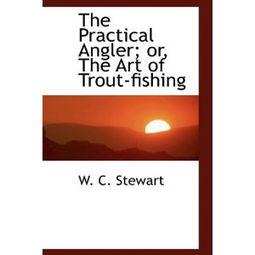Content:

Introduction:
Fishing is a popular pastime among farmers, offering a tranquil escape from the rigors of agricultural work. It not only provides relaxation but also serves as a source of fresh fish for their families. Whether you are a seasoned angler or a beginner, there are several fishing techniques that can enhance your chances of catching fish. In this article, we will delve into the art of fishing, focusing on techniques specifically tailored for farmers. We will also provide a step-by-step guide with diagrams to help you master these techniques.
Choosing the Right Equipment:
The first step in mastering fishing is to choose the right equipment. Here is a list of essential items you will need:
a. Fishing rod and reel: Choose a rod and reel that are suitable for the type of fish you want to catch. For example, a spinning rod and reel are ideal for freshwater fishing, while a baitcasting rod and reel work well for saltwater fishing.
b. Line: Select a line that is appropriate for the fish you are targeting. The line should be strong enough to handle the fish's size and weight, but not too heavy to spook the fish.
c. Hooks: Use hooks that are the right size for the bait you plan to use. Ensure the hooks are sharp to prevent the fish from easily escaping.
d. Lures and baits: Depending on the fish you want to catch, choose appropriate lures and baits. Live bait, artificial lures, and natural baits like worms, insects, and corn can be effective.
e. Sinkers and swivels: Sinkers help to keep your bait at the desired depth, while swivels prevent your line from twisting and tangling.
Casting Techniques:
Casting is an essential skill that every angler must master. Here's a step-by-step guide with diagrams:
a. Hold the rod: Grip the rod with your dominant hand, using your index and middle fingers to hold the reel handle. The remaining fingers should be wrapped around the rod handle.
b. Position the bait: Place your bait on the line and hold it with your thumb and forefinger. Make sure the bait is not too tight against the line.
c. Wind the line: Wind the line around the reel until it reaches the desired length. This ensures you have enough line to cast.
d. Start the cast: Begin the cast by lifting the rod slightly and then accelerating your wrist and arm to propel the bait forward.
e. Complete the cast: As the bait reaches its target, allow the line to follow through and settle into the water.
Bait Presentation:
Once you have cast your bait, it's crucial to present it in a way that attracts fish. Here are some techniques:
a. Natural presentation: Let the bait drift naturally in the water. This is particularly effective for fish that feed on insects or small aquatic creatures.
b. Jerking and twitching: Move your bait in short, quick bursts to mimic the movement of live prey. This technique is effective for species like bass and walleye.
c. Stop-and-go technique: Allow your bait to sit motionless for a few seconds before moving it again. This technique can trigger the curiosity of fish and encourage them to strike.
Reading the Water:
Understanding the water's characteristics is essential for successful fishing. Here are some tips:
a. Observe the water's flow: Fish tend to congregate in areas with slower currents, as they are easier to catch. Identify these areas by observing the water's flow.
b. Look for cover: Fish often hide in vegetation, rocks, or logs. Target these areas as they are likely to hold fish.
c. Identify feeding patterns: Observe the behavior of other fish in the water to understand their feeding patterns. This can help you determine the best times to fish.
Patience and Practice:
Lastly, remember that fishing is a skill that requires patience and practice. Spend time observing the water, experimenting with different techniques, and refining your skills. With time, you will become more adept at catching fish.
Conclusion:
Mastering the art of fishing can be a rewarding experience for farmers. By following these techniques and utilizing the provided diagrams, you can enhance your chances of success on the water. Remember to enjoy the process and cherish the time spent with nature. Happy fishing!












